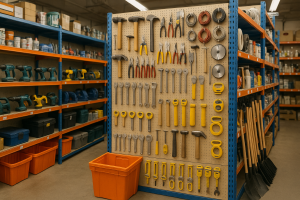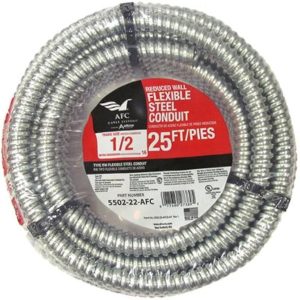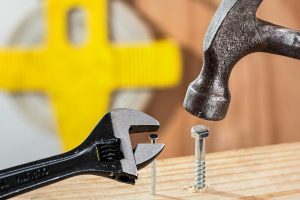How Dispensing Valves Improve Efficiency in Automated Fluid Dispensing
Imagine trying to put just the right amount of glue on a piece of paper without making a mess. It can be tricky. In big factories, machines have a similar job but with liquids that help create products we use every day, like phones, computers, and medical tools.
Dispensing valves are like special nozzles that help these machines put the exact amount of liquid where it needs to go without any waste or mess. This is super important in making sure everything is made just right!
In this article, we’re going to talk about how these dispensing valves make things easier and better in different industries, like electronics and medical devices. Let’s explore how these little components make a big difference in creating things accurately and smoothly!
Why Getting Fluid Dispensing Right is Important
Accurate fluid dispensing is integral to the integrity and functionality of manufactured products, especially those requiring the use of automated liquid dispensers. The precise application of liquids, such as adhesives or coatings, directly impacts the product’s performance and reliability. Inaccuracies or inconsistencies in this step can lead to product malfunctions and increased production costs due to waste and rework.
Maintaining consistency in fluid dispensing across all production batches is pivotal to upholding the brand’s reputation. A uniform application of fluids ensures that each unit produced adheres to the established quality standards, thereby mitigating the risk of defects and recalls.
Uniformity not only reinforces the reliability of the products but also stabilises the manufacturing process. This enables the production of items that consistently meet the specified criteria and regulatory standards.
Dispensing Valves and How They Work
Dispensing valves are integral components in the manufacturing process, ensuring the controlled release of fluids within a specified timeframe and location. These valves can be broadly categorized into two types: pneumatic and motorized.
Pneumatic Valves:
Pneumatic valves are controlled by air pressure. They are commonly used in various industrial applications where precise control of air or gas flow is required. Pneumatic valves can be actuated manually or automatically. The actuation can be based on different parameters such as pressure, temperature, or flow.
Specific Types:
- Spool Valve: This type of valve uses a spool mechanism to control the flow of fluid. The spool can move back and forth, allowing or blocking the flow.
- Snuff Back Valve: This valve is designed to prevent dripping at the end of a dispensing cycle. It ensures a clean cut-off of fluid, reducing waste and ensuring precision.
- Needle Valve: As the name suggests, this valve uses a needle-like mechanism to control the flow. It’s characterized by its ability to provide precise flow control, especially at low flow rates.
Motorised Valves:
Motorised valves are controlled by an electric motor or other types of actuators. They offer precise control and can be used in applications where manual operation is not feasible or efficient.
Specific Types:
- Auger Valve: This valve uses an auger or screw mechanism to dispense thick or particle-filled materials. The rotation of the auger controls the flow of the material.
- Progressive Cavity Pump: This is a type of positive displacement pump that uses a rotor and stator mechanism. As the rotor turns, it moves the fluid through the pump, ensuring a consistent and precise flow.
Both pneumatic and motorised valves offer advantages in terms of precision, efficiency, and automation. The choice between them depends on the specific requirements of the application, such as the type of fluid being dispensed, the required flow rate, and the level of precision needed.
Speed and Efficiency
Time is precious, especially in making products! Dispensing valves are not only accurate but also fast. They can quickly dispense liquids and move on to the next spot, helping to make products rapidly and efficiently. This speed doesn’t mean they are less accurate; they manage to be quick and precise at the same time!
Reliability in Production
When making things, it’s important that the process is reliable and can be repeated over and over without mistakes. Dispensing valves are dependable, doing their job the same way every time, ensuring that every product is made to the same high standard.
Choosing the suitable dispensing valve is crucial to ensure the efficiency of these processes.
Electronics Manufacturing and Dispensing Valves
Dispensing valves are crucial in producing electronic devices with precision and quality. They manage the accurate delivery of liquids, such as adhesives or coatings, during manufacturing. This ensures the functionality and durability of each electronic product, from circuit boards to final assemblies.
This helps in making sure our electronic gadgets work smoothly and don’t have any unexpected issues. So, the next time you use your phone or computer, remember dispensing valves played a part in making them work just right!
Dispensing Valves in the Semiconductor Industry
Let’s talk about semiconductors. These are essential pieces that help lots of our electronic things, like computers and TVs, work right. Making semiconductors needs a lot of attention to detail because we use different liquids in the process. Dispensing valves are super helpful here.
They make sure the right amount of liquid goes precisely where it needs to be. This is really important to make sure semiconductors do their job and help our electronic stuff work well. So, dispensing valves are like the handy tools that help build essential parts inside our electronics!
Ensuring Precision in Medical Devices Manufacturing
Now, let’s explore the world of making medical devices with the help of dispensing valves. Medical devices, like tools doctors use, need to be made with a lot of care because they are super important in helping keep people healthy. When making these devices, different liquids, like special glues, need to be placed just right to make sure everything sticks together properly.
Dispensing valves are like the careful helpers in this process. They make sure that the right amount of each liquid is placed in the exact right spot so there are no mistakes. This helps make sure that the medical devices are safe, reliable, and ready to assist doctors in their important work!
Conclusion
Dispensing valves are crucial in various manufacturing processes. They ensure precision and efficiency in product creation. From smartphones to medical tools, their role is pivotal. They control fluid dispensation with accuracy and consistency. This ensures each product is made correctly and works as it should.
Their ability to manage exact measurements and maintain swift production is vital. It underscores their indispensable role in multiple industries. In every item we use, dispensing valves have played an essential part. Their impact, though subtle, assures quality and reliability in the products we use daily.














Post Comment
You must be logged in to post a comment.